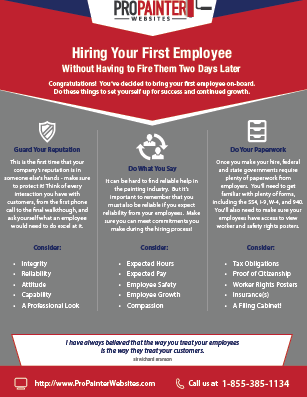The Performance Of Your Industrial Outside Paint Project Is Closely Connected To Weather Conditions-- Find Out Exactly How It Can Either Support Or Prevent Your Preferred Results
The Performance Of Your Industrial Outside Paint Project Is Closely Connected To Weather Conditions-- Find Out Exactly How It Can Either Support Or Prevent Your Preferred Results
Blog Article
Content Writer-Vilstrup Hollis
When you're planning a commercial external paint task, don't take too lightly the impact of climate on your outcomes. You need to consider aspects like temperature, humidity, and precipitation, as they can make or break your paint work. For instance, did you know that optimal conditions ask for specific temperature arrays and moisture degrees? Stopping working to keep track of these aspects can lead to unequal coatings or even damage to fresh paint. Comprehending these elements is key to attaining a long-lasting, professional outcome. So, what certain climate condition should you be wary of?
Temperature Considerations
When it comes to industrial exterior paint, temperature plays an essential function in the end result of your task. If you're painting in severe heat, the paint can dry also swiftly, leading to problems like bad attachment and uneven finishes. You intend to aim for temperature levels in between 50 ° F and 85 ° F for the very best outcomes. Listed below 50 ° F, paint may not treat effectively, while over 85 ° F, you risk blistering and splitting.
Timing your project with the right temperatures is important. Beginning your job early in the early morning or later on in the afternoon when it's cooler, especially throughout hot months.
Likewise, think about the surface area temperature; it can be dramatically more than the air temperature, specifically on bright days. Make use of a surface thermometer to inspect this prior to you start.
If temperatures are unpredictable, keep an eye on the weather prediction. https://painternearme99887.blogscribble.com/33308088/significant-fads-in-residential-painting-providers-for-2025 decreases or warm front can derail your strategies. You don't want to begin repainting just to have the conditions transform mid-project.
Moisture Levels
Moisture degrees considerably affect the success of your business outside paint task. When the moisture is expensive, it can impede paint drying and healing, bring about a range of problems like inadequate bond and finish top quality.
If you're intending a work during moist problems, you could find that the paint takes longer to dry, which can extend your project timeline and rise prices.
Conversely, reduced humidity can additionally present obstacles. Paint may dry also quickly, preventing appropriate application and causing an unequal surface.
You'll want to keep track of the moisture degrees closely to guarantee you're functioning within the ideal array, normally in between 40% and 70%.
To obtain the best results, consider using a hygrometer to measure humidity before beginning your job.
If you locate the degrees are outside the optimal range, you might require to change your schedule or pick paints designed for variable conditions.
Always get in touch with the supplier's guidelines for details suggestions on moisture tolerance.
Precipitation Impact
Rainfall or snow can substantially disrupt your commercial outside painting strategies. When rainfall happens, it can get rid of newly used paint or produce an uneven surface. Ideally, https://www.popsugar.com/home/Best-Paint-Use-Pumpkins-44000292 want to choose days with completely dry weather to make certain the paint adheres appropriately and remedies effectively. If you're captured in a rain shower, it's ideal to halt the task and wait for problems to enhance.
In addition, snow can be even more destructive. Not only does it develop a wet surface area, however it can likewise reduce temperatures, making it tough for paint to dry. This can lead to issues like peeling or blistering down the line.
It's vital to examine the weather report prior to starting your task. If rainfall or snow is anticipated, take into consideration rescheduling.
Always remember to allow sufficient drying out time between coats, especially if the weather stays uncertain.
Verdict
Finally, watching on the weather condition is important for a successful commercial outside painting project. By keeping see post of temperature, humidity, and precipitation, you can make sure the most effective conditions for application and treating. Bear in mind to prepare your work around beneficial weather and constantly follow maker standards. With the appropriate approach, you'll achieve a resilient, gorgeous coating that can withstand the elements. Do not let the weather capture you unsuspecting-- stay educated and paint clever!
